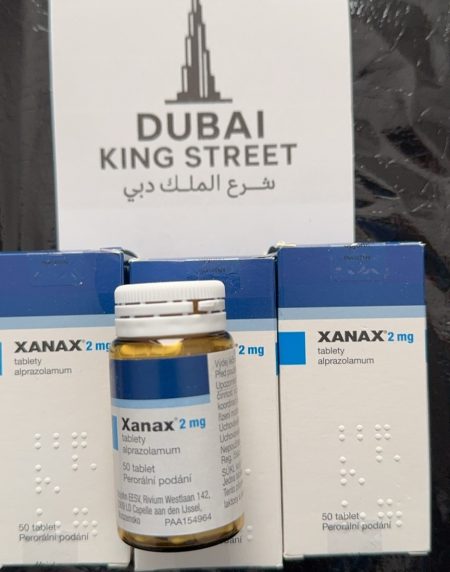Details
Buy OxyContin Mundipharma 80 mg online in Dubai
OxyContin Mundipharma 80 mg is a high-dose, prolonged-release formulation of oxycodone hydrochloride, a potent opioid analgesic used in the clinical management of severe and persistent pain. As a full μ-opioid receptor agonist, oxycodone acts directly on the central nervous system to alter pain perception and emotional response to pain stimuli. The 80 mg strength is intended only for opioid-tolerant patients, where weaker analgesics are no longer effective, and where long-term, continuous pain management is required.
This medication is designed to release the active ingredient gradually over a 12-hour period, helping maintain steady plasma levels and reduce fluctuations in pain control. Due to its strength, this formulation is reserved for situations where less intensive pain relief methods have proven inadequate—commonly in oncology, palliative care, and post-surgical pain management. Oxycodone in this form is classified as a controlled substance in most jurisdictions, and its use is strictly regulated to prevent misuse, addiction, and overdose.
Mechanism of Action and Pharmacological Properties
Oxycodone functions primarily by binding to μ-opioid receptors located throughout the brain and spinal cord. Upon activation, these receptors inhibit the transmission of pain signals by reducing the release of neurotransmitters such as substance P and glutamate. This leads to a dampening of pain sensation, as well as a decrease in the emotional distress associated with pain. Unlike partial agonists or dual-mechanism agents like tramadol, oxycodone exhibits strong, direct opioid receptor activity, making it more effective in controlling high-intensity pain but also more closely associated with classic opioid-related side effects.
The 80 mg extended-release form allows clinicians to manage severe pain with fewer daily doses, offering a more stable therapeutic window. However, the formulation should never be broken, chewed, or crushed, as doing so can release a potentially fatal dose of oxycodone all at once. The drug is metabolized in the liver, primarily via the CYP3A4 and CYP2D6 pathways, and individual metabolism can significantly influence efficacy and tolerability. Clinical use requires careful dose titration, close monitoring, and individualized risk assessment—especially in patients with comorbid conditions.
Clinical Considerations and Risk Management
Due to its potency, OxyContin 80 mg is associated with a higher risk of respiratory depression, dependence, and abuse, particularly when not used exactly as prescribed. It is typically initiated only after assessing a patient’s opioid history and tolerability. Prolonged use may lead to physical dependence, and abrupt discontinuation can result in withdrawal symptoms. Patients must be monitored regularly for signs of misuse, tolerance, or adverse effects, and therapy should be adjusted accordingly.
In research and clinical pharmacology, oxycodone serves as a benchmark compound for studying opioid receptor interactions, pain modulation pathways, and comparative analgesic efficacy. It is often included in studies evaluating the long-term safety of opioid therapy, the development of opioid-induced hyperalgesia, and pharmacogenetic variability in opioid metabolism. For professionals engaged in pain medicine, pharmacovigilance, or substance monitoring, OxyContin offers a case study in balancing therapeutic benefit with safety risks.



